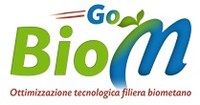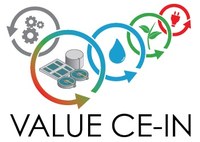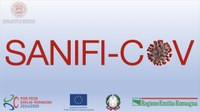Emilia-Romagna POR-FESR 2014-2020 completed Projects

GoBioM
Emilia-Romagna Region Budget: EUR 160,000
Duration: 2016-2018
GoBioM goal is the technological optimization of the regional / national biomethane supply chain, overcoming some of the current main critical issues, with the following objectives:
- optimize the technology for upgrading biogas to biomethane;
- build the food supply chain (residual biomass) to the biomethane plants;
- optimize the anaerobic digestion process: a) developing analytical protocols for the characterization of biomass and for process control; * b) developing a biomass pre-treatment based on hydrodynamic cavitation and controlled hydrolysis;
- valorise the CO2 separated from CH4 for the cultivation of algae on an industrial scale;
- analyze the environmental, social and technical-economic sustainability of the biomethane supply chain.
The EMRG participated in the Project by developing a classification scheme for the residual biomasses and by quantifying their availability at the regional level.
CleanPort
Emilia-Romagna Region Budget: EUR 1,006,072.50
Duration: 2016-2018
The Research and Development activities of CLEANPORT has been carried out in the Port of Ravenna, with the following objectives:
- Design of port infrastructures necessary for the realization of an energy smart grid.
- The design will take into account all technical regulations and fire prevention as well as possible urban, environmental, and/or landscape constraints.
- Construction of a manifold station for LNG and natural gas generated by biomass and appropriately purified for combustion in naval engines.
- Study and substantial improvement of the natural gas liquefaction system for the LNG storage on board vessels, integration with the banqueting facilities and exploitation of renewable sources by integrating with the natural gas source of the grid with the one coming from biomass.
- Improvement of liquefaction and storage accumulation in tanks.
This will set the foundations for the use of ground structures as real refueling systems without the expensive and complex infrastructures needed for the sole supply of electricity from the outside of the ship.
The EMRG participated in the Project by analysing the possible sources of biomass to be digested for methane production around the Port of Ravenna.

TERMOREF
Emilia-Romagna Region Budget: EUR 976,317.20
Duration: 2016-2018
The goal of the TERMOREF project concerns the use of waste biomass for the production of H2, fuels and biochar. The overall result is the capture of CO2, the production of energy and an agricultural fertiliser.
The combination of thermochemical processes of pyrolysis and gasification with catalytic processes of tar cracking and tar reforming allows to obtain products to be used for the generation of H2, energy and quality fuels, with greater efficiency, and to produce biochar to be used as a soil improver. The processes use residual biomass and are zero waste.
The EMRG has been engaged into the construction and test of a prototype pyrolyser/reforming system in collaboration with the Istitute Fraunhofer UMSICHT, Sulzbach-Rosenberg Branch.

VALSOVIT
Emilia-Romagna Region Budget: EUR 987,662.99
Duration: 2016-2018
The project goal is the parallel development of the valorisation of waste (grape seeds, skins, fresh stalks, white marc, lees, ethanol distillation heads and tails) both in the chemical and energy fields, and in the nutraceutical, cosmetic and biostimulation sectors.
Specific objectives of the first line of research are the optimisation of processes for the production of:
a) maleic bio-anhydride (bio-AM) for the conversion of ethanol from distillation waste using bifunctional catalysts designed ad hoc;
b) polyhydroxyalkanoates (PHA) through the implementation of three processes, namely pyrolysis of waste, acidogenic fermentation to obtain volatile fatty acids (VFA), and aerobic fermentation of VFA to produce PHA;
c) CH4 and H2 by setting up suitable fermenters.
The pre-industrial development phase of the processes will follow the validation phase in the laboratory.
The aim of the second line of research is the preparation of formulations of interest in the nutraceutical, cosmetic, biostimulation and plant defense sectors.
The common strategy involves the identification of active molecules through appropriate bioactivity tests, followed by the formulation activity to be carried out in collaboration with the companies involved. The entire development of research for both lines is accompanied by evaluations of the economic, environmental and social sustainability of the processes.
The EMRG has been engaged in the Life Cycle Assessment of the processes.

VALUE CE-IN
Emilia-Romagna Region Budget: EUR 797,874.75
Duration: 2019-2022
The Project goal is the valorisation of wastewater and sludge according to Circular Economy and Industrial Symbiosis, proposing high TRL solutions and technologies (KET) in order to promote the closure of primary goods cycles such as water resource, nutrients and sludge, increasing the system efficiency in the energy use and introducing new business models.
The EMRG has been engaged in the evaluation of technologies and processes aimed at improving wastewater treatments plants (WWTPs) sustainability. promoting the recovery of raw materials to be re-used in wastewater treatment processes for nutrient removal, in agriculture as fertilizers or for energy production purposes. The processing of sewage sludge by pyrolysis + reforming, produces a bio-char which will be used as filtering material both for nutrient removal from wastewaters and to extract emerging pollutant (pharmaceuticals, plastics).

SANIFI-COV
Emilia-Romagna Region Budget: EUR 101,600.00
Duration: 2019-2022
The sanitation of work surfaces is an indispensable element to allow the safe resumption of production activities and services after the lockdown linked to the SARS-CoV-2 virus pandemic. The current methods of decontamination and sanitation that involve the use of disinfectants produce pollution, causing damages to the water purification systems. The goal of the SANIFI-COV project was to develop a system for heating the air combined with the emission of ozone and subsequent air purification with an activated carbon filter and a UV-photocatalytic module. The solution applies to all workplaces where it is possible to maintain a temperature of about 40 ° C for a time that can be evaluated in less than two hours and emit ozone into the air when the premises are not occupied. The project experimentally verified the system's ability to destroy the virus, through molecular analyses. The verification took place on different surfaces, optimizing the quantities of heat and ozone released into the premises, also for the purpose of reducing energy consumption. The results from the SANIFI-COV project are the construction diagrams of the sanitation system and the related application protocols.